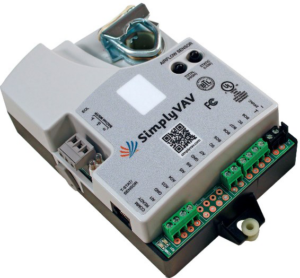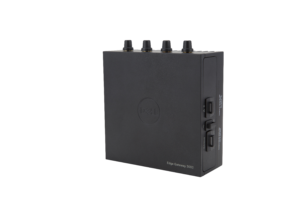It is common for light-commercial HVAC systems to include either a roof-top or heat pump unit with pressure-dependent variable volume and temperature, or VVT, zones. These systems had their benefits – primarily cost – but were not the most consistent nor efficient when it came to heating, cooling and comfort. As time goes on, these systems become increasingly pricey to maintain and better options have come along. A complete mechanical system overhaul is expensive, and continually replacing components as needed can get costly as well. But never fear, there is one cost-effective solution – a VVT retrofit – which changes the system to a pressure-independent VAV, or Variable Air Volume, system. This conversion can also be upgraded further since it is now compatible with building automation systems and the Internet of Things (IoT).
Pressure-Dependent & Pressure-Independent Systems
Pressure-dependent systems are notorious for having issues maintaining consistent control of temperature and airflow. Opening or closing a single damper can affect the air delivered to all other zones, and no minimum airflow is maintained for ventilation. If one zone area needs cooling and its damper opens, the airflow to other zones may be starved and none of the zones get adequate airflow.
 Pressure-independent systems correct this by guaranteeing a set volume of air into each zone, regardless of other zones or duct pressure. This provides consistent airflow to each zone, better temperature control and better ventilation. This all adds up to increased efficiency and occupant comfort. A pressure-dependent system can be converted into a pressure-independent system with the installation of differential pressure flow sensors, such as the KMC SSS-101x and a capable controller, such as SimplyVAV.
Pressure-independent systems correct this by guaranteeing a set volume of air into each zone, regardless of other zones or duct pressure. This provides consistent airflow to each zone, better temperature control and better ventilation. This all adds up to increased efficiency and occupant comfort. A pressure-dependent system can be converted into a pressure-independent system with the installation of differential pressure flow sensors, such as the KMC SSS-101x and a capable controller, such as SimplyVAV.
The VVT retrofit also requires a digital controller on the unitary equipment. A special model of KMC’s FlexStat unitary controller (the BAC-120063CW-ZEC) polls the KMC SimplyVAV controllers for what type of air is needed – heating or cooling, zone status analytics, discharge air temp and unit status.
Connecting to the IoT
 To take the conversion to the next level, KMC Controls suggests connecting to the IoT with the addition of KMC Commander. KMC Commander then provides virtual thermostats for occupants and equipment status for techs available on the web and allows you to monitor, control and trigger actions on the device network from anywhere, on any device. You can also analyze the data in customized, easy-to-read layouts that brings the most pertinent information to you.
To take the conversion to the next level, KMC Controls suggests connecting to the IoT with the addition of KMC Commander. KMC Commander then provides virtual thermostats for occupants and equipment status for techs available on the web and allows you to monitor, control and trigger actions on the device network from anywhere, on any device. You can also analyze the data in customized, easy-to-read layouts that brings the most pertinent information to you.
For more information on the BAC-120063CW-ZEC, click here.
 Cart
Cart